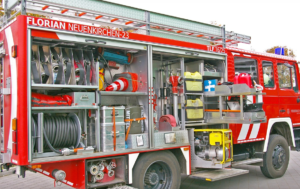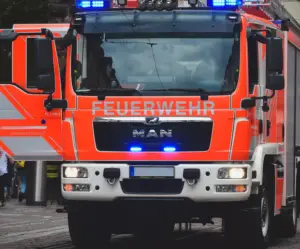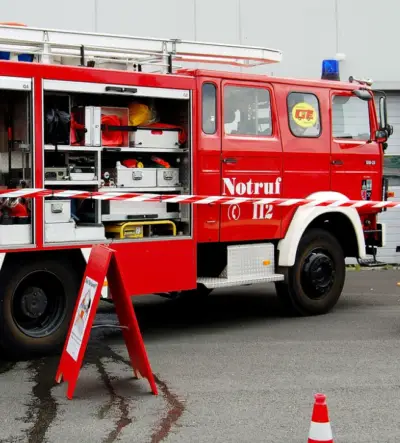Are you curious about the differences between fire engines and fire trucks? Both vehicles play a crucial role in fighting fires and saving lives, but they have their own unique features and capabilities. In this article, we will delve into the comparison of fire engine vs fire truck, highlighting their differences and similarities.
Fire engines and fire trucks are both vehicles used by fire departments to respond to fires and other emergencies. The main difference between the two is their size and capabilities. Fire engines are typically smaller and more agile, with a focus on carrying water and firefighting equipment.
Fire trucks, on the other hand, are larger and more versatile, with a wider range of equipment and tools for a variety of emergency situations. Fire engines are best suited for small fires and urban areas, while fire trucks are more effective for large fires and rural areas.
Why are firetrucks red?

There are several theories as to why fire trucks are red. One of the most commonly cited reasons is that red is a highly visible color that can easily grab attention in emergency situations. This is especially important when fire trucks are responding to fires and need to be seen by other drivers on the road.
Another theory is that red is a traditional color associated with fire and danger. In many cultures, red is seen as a powerful and commanding color, and it is often used to signify warning and caution. This association may have influenced the decision to paint fire trucks red.
Red is also a color that is easy to maintain and clean, which is an important consideration for fire trucks that may be exposed to dirt, grime, and soot in the line of duty.
In addition, some sources suggest that the use of red on fire trucks may have originated from the Great Chicago Fire of 1871. After the disaster, the Chicago Fire Department began using red fire trucks to distinguish themselves from other city departments and to signify their role in fighting fires. This tradition may have spread to other cities and towns over time.
Furthermore, the use of red on fire trucks is a combination of practicality, tradition, and symbolism. It helps to make fire trucks more visible and recognizable in emergency situations, and it also has a strong association with firefighting and danger.
How important is fire truck to firefighters?
Fire trucks are extremely important to firefighters as they provide the necessary tools and equipment for them to respond effectively to fires and other emergency situations. Fire trucks carry a wide range of equipment, including water hoses, pumps, ladders, tools for cutting and prying, and specialized equipment for fighting different types of fires.
In addition, fire trucks also provide a means of transportation for firefighters to quickly and safely get to the scene of a fire. They can be equipped with sirens and flashing lights to help clear traffic and make way for the firefighters to reach the emergency as quickly as possible.
Also, fire trucks can serve as a command center for firefighters on the scene. They often have radios and communication systems for coordinating with other firefighters and emergency responders, as well as maps and other information to help guide the response effort.
Additionally, fire trucks are an essential piece of equipment for firefighters, providing them with the tools and resources they need to save lives and protect property in emergency situations.
Fire engine vs fire truck

Fire engines and fire trucks are both vehicles used by fire departments to respond to fires and other emergencies. While they may seem similar at first glance, there are several key differences between the two that make them better suited for different situations.
1. Size and capabilities:
Fire engines are typically smaller and more agile, with a focus on carrying water and firefighting equipment. Fire trucks are larger and more versatile, with a wider range of equipment and tools for a variety of emergency situations.
2. Water capacity:
Fire engines have a smaller water tank and are equipped with a pump to draw water from nearby sources. Fire trucks have a larger water tank and may also be equipped with a ladder and a hose that can be extended to reach higher levels of a building.
3. Speed and response time:
Fire engines are faster and more responsive, with a focus on getting to the scene of a fire quickly. Fire trucks are better suited for longer-distance travel and can be more effective in rural areas where water sources may be scarce.
Overall, fire engines and fire trucks are both essential vehicles for fire departments, but they have different strengths and capabilities. Fire engines are better suited for small fires and urban areas, while fire trucks are more effective for large fires and rural areas.
Fire engine vs fire truck: which is more effective in fighting fires?
Both fire engines and fire trucks are effective in fighting fires, but they have different strengths and capabilities. Fire engines are typically smaller and more agile, with a focus on carrying water and firefighting equipment. They are able to get to the scene of a fire quickly and begin fighting the fire before the fire truck arrives.
Fire trucks, on the other hand, are larger and more versatile. They have a wider range of equipment and tools for a variety of emergency situations, including rescue, hazmat, and medical emergencies. They also have more space for firefighters and other responders, allowing for larger crews and more coordinated responses.
In terms of fighting fires, fire engines are better suited for small fires and urban areas, where their agility and speed can be effective in quickly extinguishing the fire. Fire trucks are better suited for large fires and rural areas, where their larger water capacity and extended hoses can be more effective in reaching higher levels of a building and extinguishing the fire.

Fire engine vs fire truck: which has more water capacity?
Generally, fire trucks have a larger water capacity than fire engines. Fire trucks typically have a larger water tank and may also be equipped with a ladder and a hose that can be extended to reach higher levels of a building. This allows them to carry more water and deliver it to the fire more effectively.
Fire engines, on the other hand, have a smaller water tank and are equipped with a pump that can draw water from nearby sources, such as hydrants or ponds.
While they may not be able to carry as much water as fire trucks, they are still effective in fighting small fires and are able to quickly get to the scene of a fire and begin extinguishing it.
Furthermore, fire trucks have a larger water capacity than fire engines, which makes them more effective for fighting large fires and reaching higher levels of a building. However, fire engines are still effective in fighting small fires and are able to quickly get to the scene of a fire.
Fire engine vs fire truck: which is more versatile in emergency situations?
In terms of versatility in emergency situations, fire trucks are generally more versatile than fire engines. Fire trucks are larger and have a wider range of equipment and tools for a variety of emergency situations, including rescue, hazmat, and medical emergencies.
They also have more space for firefighters and other responders, allowing for larger crews and more coordinated responses. Fire engines, on the other hand, are smaller and have a more limited range of equipment and tools. They are primarily designed for fighting fires and may not be as effective in other types of emergency situations.
Generally, fire trucks are more versatile in emergency situations due to their larger size, wider range of equipment, and ability to carry more responders. However, fire engines are still effective in fighting fires and are able to quickly get to the scene of a fire and begin extinguishing it.
Recommended:
What are the key features of a fire engine compared to a fire truck?
The key features of a fire engine compared to a fire truck include size, water capacity, speed and response time, and equipment and capabilities.
1. Fire engines are typically smaller and more agile than fire trucks, with a focus on carrying water and firefighting equipment.
2. Fire trucks have a larger water capacity and may also be equipped with a ladder and a hose that can be extended to reach higher levels of a building.
3. Fire engines are faster and more responsive, with a focus on getting to the scene of a fire quickly. Fire trucks are better suited for longer-distance travel and can be more effective in rural areas where water sources may be scarce.
4. Fire engines are equipped with water hoses, pumps, ladders, tools for cutting and prying, and specialized equipment for fighting different types of fires. Fire trucks have a wider range of equipment and tools for a variety of emergency situations, including rescue, hazmat, and medical emergencies.
Conclusion
If you need to know more about fire trucks and fire engines, then you are just in the right place. This page on fire engine vs fire truck reveals in detail all that you need to know about the two firefighting device, their uses, importance, and how they function.

